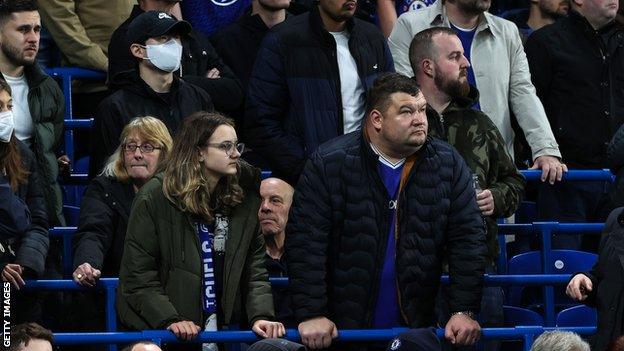Safe standing has had 'positive impact' on fan safety - report
- Published

The report says next steps will include assessing levels of demand for safe standing areas among fans
Safe standing at grounds has had "a positive impact on spectator safety" and improved the matchday experience, says a report.
Five Premier League and Championship clubs have taken part in a government-commissioned pilot study since January.
Rails in seated areas of grounds have allowed fans to stand while their safety has been independently assessed.
Sports Minister Nigel Huddleston called the findings "very encouraging for fans, clubs and safety groups".
Huddleston said he will "reserve final judgement on a wider rollout until the process is completed".
The interim report by CFE Research, commissioned by the Sports Grounds Safety Authority (SGSA), found that barriers and rails installed in front of seats made goal celebrations more orderly and overcrowding easier to spot.
It also found that entering and exiting rows and aisles was safer because of the "stability" offered by barriers, and that there was reduced conflict between stewards and supporters as staff no longer needed to encourage fans to sit down.
Chelsea, Manchester City, Manchester United, Tottenham and Cardiff City are the five clubs taking part in the 'early adopters' programme set up by the SGSA.
On 2 January Stamford Bridge became the first top-flight ground to allow licensed standing in almost 30 years when Chelsea and Liverpool met in a 2-2 draw.
Designated standing areas had not been seen at Premier League grounds since the adoption of all-seater stadia in the early 1990s - a recommendation of the Taylor Report following the Hillsborough disaster in 1989 when 97 fans died in a crush.
Spectators at many grounds have continued to stand in seated areas, most commonly behind the goals, despite regular warnings from local authorities and police that it is dangerous.
The trial phase will continue until the end of the season and a final report will be submitted to the Department of Culture, Media and Sport.